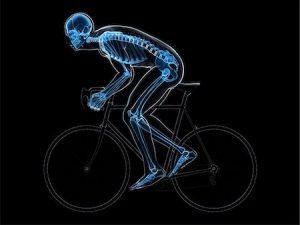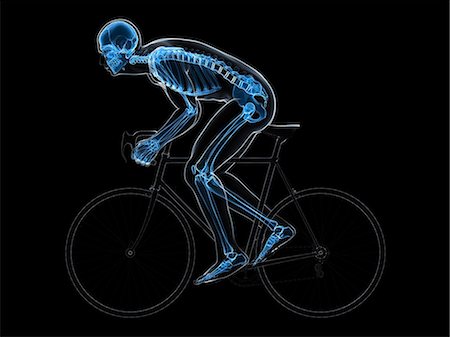Cycling is bad for bone density, but there is hope
 A few years ago, my mum who is in her seventies was diagnosed with osteoporosis and she warned me that I should take measures now to avoid the same fate, by keeping a close eye on my bone density, particularly because cycling is bad for bone density. Taking her advice I asked my doctor to send me off for a bone density scan which confirmed that I have already entered the osteopenia zone which is an indication that my bones are weaker than normal, but not weak enough to be called osteoporosis.
A few years ago, my mum who is in her seventies was diagnosed with osteoporosis and she warned me that I should take measures now to avoid the same fate, by keeping a close eye on my bone density, particularly because cycling is bad for bone density. Taking her advice I asked my doctor to send me off for a bone density scan which confirmed that I have already entered the osteopenia zone which is an indication that my bones are weaker than normal, but not weak enough to be called osteoporosis.
Interestingly I was involved in an accident earlier this year and thankfully didn’t break any bones, despite hitting and bruising some of my ribs. So I’m taking that as a good sign of my bone health, even though I’m in the osteopenia zone.
As a cyclist it is particularly important to focus on bone density. As you all know cycling has a variety of health benefits, however, research has shown that it does not help create strong bones. In fact, depending on the amount of cycling you do, it may even decrease your bone density. So, if your only form of exercise is cycling, you may end up with weaker bones than those who are inactive.
The primary reason for cyclists having low bone density is that it is a non-weight bearing activity. High level cycling in particular has been shown to have negative effects on bone strength because of the amount of time cyclists spend training and riding. You are spending a lot of time seated, with no compression forces on your spine and pelvis. Even though it may feel like you are pedalling hard at times, the forces you are putting into the pedals are not distributed in a way that puts significant strain on your bones, which is needed for bone growth.
We all want strong bones that are resistant to breaking; especially as we age. This is even more important for cyclists. Let’s face it, a crash or fall at some point in your cycling life is likely to happen. Stacking the odds in your favour by including activities to maintain and stimulate bone strength is your best line of defence against a fracture if you do happen to hit the ground.
The aspects that account for bone strength include bone mineral density, content, bone size, and thickness. When muscles contract they pull on the bones to which they are connected. These forces provide the stimulus for bones to grow both thicker and denser. Maximal resistance training and impact forces are the best way to provide this stimulus to your bones. A bone needs to experience a tenth of the amount of force needed to break it in order to be stimulated enough to create increased bone density.
Adding resistance training to your exercise program after developing a foundation will ensure that you are ready for the higher forces that these often place on the body. Strength training results in your body’s ability to actually increase the amount of muscle fibres that are fired, as well as, how fast they are able to fire. Both of these things result in the muscle being capable of producing more force, which in turn, means more forces exerted upon the bones to which they are attached.
In addition to providing greater forces to stimulate bone growth, strength training also reduces risk factors that result in broken bones by increasing muscle mass and improving balance. If you have better balance, more strength and muscle, and stronger bones, all of those things come together to make you more physically resilient and stable. You will be better prepared to handle that unexpected gust of wind or pothole due to increase core and total body strength and stability. If it happens that you are involved in a crash, your bones are less likely to crack under the impact.
To help my bone density I also run twice a week, attend a personal training session with a focus on resistance training, plus I take Vitamin D and a calcium supplement. Hopefully all of this will help stop my bone density deteriorating further.


I am especially interested in cycling and osteoporosis. I have been osteopenic until recently, I am in my late 50’summer, I am now on the cusp of osteoporosis registering particularly in my lower back. I have made the same lifestyle choices ax you with exercise but have chosen to adjust my diet to pick up the necessary nutrients. I loved your article as more women need to be aware. I am training to be a yoga teacher and will focus on yoga and cycling and osteoporosis.